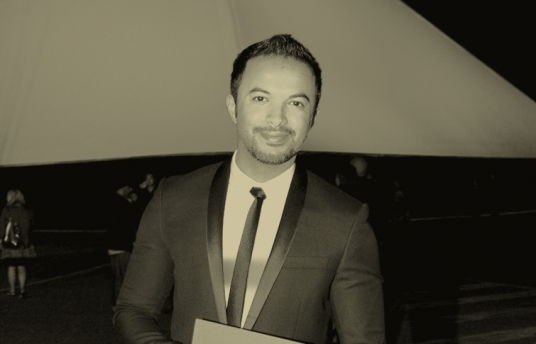People in Film: Mohammed Saeed Harib
Jan 30, 2013

The unique style and cultural significance of animator, artist, photographer and jack-of-all-trades, Mohammed Saeed Harib, is known throughout the region and has captured the imagination of thousands of children and adults alike. Known prominently for his work on Freej, Harib is an artist who continues to challenge himself and push the boundaries of his craft while delivering work that is culturally relevant locally and on the international stage. DFI’s editorial team recently had the chance to catch-up with Harib and discuss his work.
DFI: Do you think Freej has influenced how youth view themselves and their culture within the region?
Harib: I think that Freej has managed to effect an entire generation of viewers because many children grow up without any content that reflects their identity and culture. Nowadays we live in a place that has a very metropolitan atmosphere allowing us to meet people from many different nationalities, however most culture is only shown and we really don’t get to live it. Freej captures a slice of society which is the grandmothers, and within local society you really don’t get to see or interact with them that much or know what they are talking about. These characters in real life and in the cartoon represent the golden age of morals and simplicity.
What is really interesting about the project is giving kids the possibility to learn about their own life and culture in its simplicity. I think it gives them a dose authentic culture and identity. It is very hard within our society to be an individual, but often when I speak to schools and universities, I push the message of non-traditional job options. I say to students that ninety-nine percent of you will get a normal job however, I am there to speak to the one percent who will be different, and I hope that this will inspire them.
DFI: How do you remain creative in your practice and push yourself?
Harib: One thing that I have learned about myself is that I need to be a well-rounded, jack-of-all-trades. I like to try different art forms and hope that one day I will ace one. I turn to photography and start taking pictures, then I will ditch that for a while and do some logo design, then theatre and music—this is how I develop my skills. People look at me and say I am an animation director, yet I am much more than that. I am someone who has worked in a lot of mediums. In the end, it is your personal journey, your mature life is only thirty to forty years and in that time you need to leave a mark, and within this time I am trying to go everywhere in the hopes that I leave some kind of legacy. For me, I try to jump around and leave a mark while also developing myself, not being comfortable with my past achievements.
DFI: What has been the most inspiring moment of your journey so far?
Harib: Five years ago, I was nobody and I couldn’t even get funding for my projects, I had to get a loan from a bank to prove to financiers that I was really serious about this project. When you don’t come from a renowned background in media, and you say that you want to do the number one cartoon show, people laugh at you. At the time I hadn’t directed five seconds of anything in my life—and to go on to do a show that became a cultural phenomenon is an inspiring feeling. The thing is that I never look back and try to be true to myself. Meeting Roger Allers the director of the ‘Lion King’, to discuss a project that you are working on together, happened because I worked on grandmothers in Freej. I took the risk and here I am. It is mind blowing because no one gets these kind of opportunities. There are millions of animation directors out there, and for me to sit with such renowned artists is very, very humbling.
DFI: What does the future hold for you as an artist?
Harib: I can tell you that in December I will begin doing this project and in January another, but to be honest I never know. I always strive to deliver a unique touch with projects that are extremely varied in there platforms. Managing to maintain the same fingerprint and identity within the work I create is something that I strive to continue in the future.